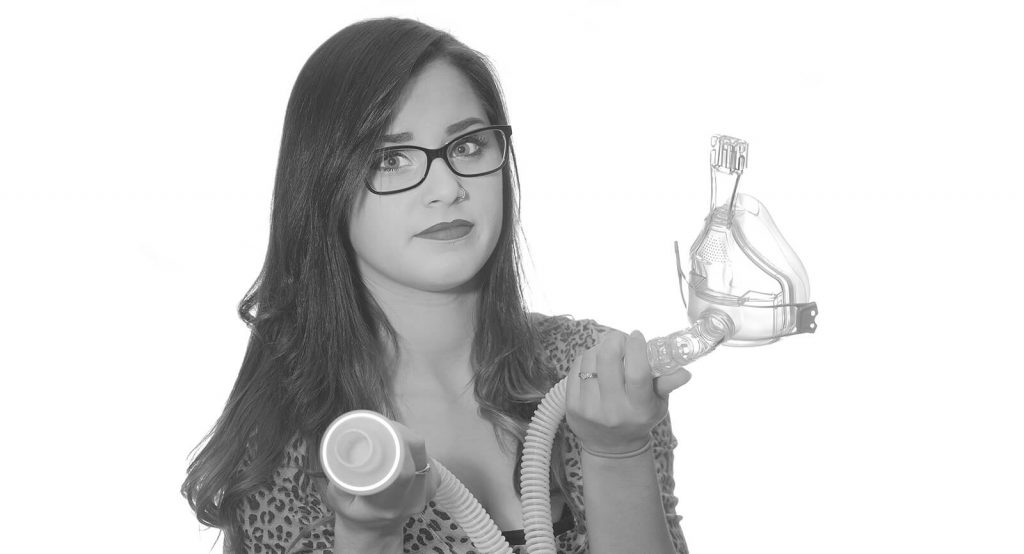How to Manage the NiPPV Intolerant Patient

Emergency Department Use of Noninvasive Positive Pressure Ventilation (NiPPV): Tips, Tricks, and Alternatives to Managing the BiLevel and CPAP Intolerant Patient
Published by Sarah Brundidge, MSc, RRT, AE-C
The views and ideas presented in this blog article are solely those of the author, and the content is not intended to serve as medical advice. Vapotherm does not practice medicine or provide medical services. Practitioners should refer to the full indications for use and operating instructions of any products referenced herein before prescribing them. Sarah Brundidge is a paid consultant of Vapotherm.
The emergency department (ED) can often be a chaotic and high intensity environment. As an ED clinician, it is helpful and important to quickly troubleshoot any problems that may arise during the care of a patient. Noninvasive Positive Pressure Ventilation (NiPPV) is a commonly utilized tool during the treatment of various cardiac and pulmonary conditions seen in the ED. NiPPV includes BiLevel Positive Airway Pressure and Continuous Positive Airway Pressure (CPAP). There are a few things an ED clinician needs to be aware of when using NiPPV, including for example: the patient’s comfort, application of appropriate interfaces and settings of the noninvasive ventilator, their own familiarity and knowledge of the equipment, and what alternative devices should be considered.
In an emergent situation, patient comfort is still very important. An uncomfortable patient is at risk of becoming a noncompliant patient. Here are some steps to ensure patient comfort:
- Talk to your patient – Depending on the urgency of the situation, explain what NiPPV is and why it is being chosen as a treatment. Patients should be informed that eating and drinking will not be permitted while on BiLevel or CPAP. Informed patients may be more likely to comply with treatments despite being anxious.
- Choose the appropriate mask size – Be sure to use the sizing tool that comes with each mask. Because each patient’s face shape is unique, it is important to find the best fitting one. When considering mask size be aware of patient anxiety or claustrophobia. Each mask has a differing degree to which they obstruct a patient’s field of vision. Nasal masks and nasal prongs are smaller in profile than helmets or oronasal masks.
- Acclimate a patient to the device – Both BiLevel and CPAP exert a pressure via air flow into the mask affixed to a patient’s face; this can be unsettling. Start by placing the mask on the patient without securing the straps, and consider beginning with lower pressure settings that can be gradually increased as tolerated. This allows for the patient to acclimate to the feeling of the mask and the air flow delivered by the ventilator. Secure the straps when the patient is ready.
- Confirm an appropriate mask fit – A properly fitting mask should be neither too loose nor too tight. A loose fitting mask can lead to air leaks that cause skin and eye irritation. Large air leaks can lead to patient-ventilator asynchrony due to loss of pressure and the need for higher flows to reach the set pressures and targeted volumes. With prolonged use, masks secured too tightly can cause skin breakdown known as pressure ulcers. Hard, bony structures of the face, such as the bridge of the nose are prone to pressure ulcers. Making sure the skin is dry before securing the mask or placing a gel pad on the irritated area can help reduce skin breakdown. Be sure to check the tension of the mask straps. If too tight, these cause pressure ulcers at the back of the neck.
- Add heated humidity – When used for extended periods of time, unhumidified NiPPV can cause eye, nasal, oral, and skin irritation due to the dry medical gases being delivered. A patient may complain of experiencing nasal congestion, dry mouth, or a sore throat. Humidity can be added in the ventilator circuit via a heat moisture exchanger (HME) or an electric heated chamber.
- Assess the patient for developing discomfort and complications – Patient discomfort can occur throughout the duration of NiPPV treatment. Some problems, not previously mentioned, to be aware of include:
- Ear and sinus pain
- Gastric insufflation
- Vomiting, aspiration
- Orthodontic problems
- Increased ICPs and intraocular pressures
An ED clinician should be knowledgeable and proficient in NiPPV indications and contraindications, utilizing the equipment, the various ventilator modes, and the limitations of each mask. BiLevel and CPAP intolerance can lead to more invasive means of treatment if there is worsening or no change in the patient’s clinical status. As with any treatment modality, NiPPV comes with its complications. Preventing these is essential to positive patient outcomes and compliance.
Avoiding Use of NiPPV
Despite identifying “the ideal NiPPV candidate”, talking to the patient about what to expect, and correctly fitting the appropriate mask, not all patients will tolerate the BiLevel or CPAP. It is important to consider available alternative non-invasive modalities to traditional BiLevel and CPAP, like High Velocity Nasal Insufflation (HVNI). HVNI has been shown to decrease CO2 rebreathing, increase oxygenation, decrease work of breathing and aid in the mobilization of secretions. Randomized clinical trial evidence has also shown HVNI to be a mask-free respiratory support tool as effective as NiPPV.1,2 It is a comfortable therapy because the medical gases are heated and humidified and delivered via nasal prongs instead of a mask. The patient is better able to communicate, eat, drink and be given oral medications while on therapy.
ED clinicians should consider all available approaches in preventing BiLevel and CPAP patient intolerance and to continually monitor for developing or increasing intolerance. By maintaining proficiency and competency with NiPPV equipment and troubleshooting methods, the ED clinician may increase patient comfort and positive clinical outcomes. It is just as important that clinicians are aware of and adept at using alternative therapies to BiLevel and CPAP, like HVNI.
References